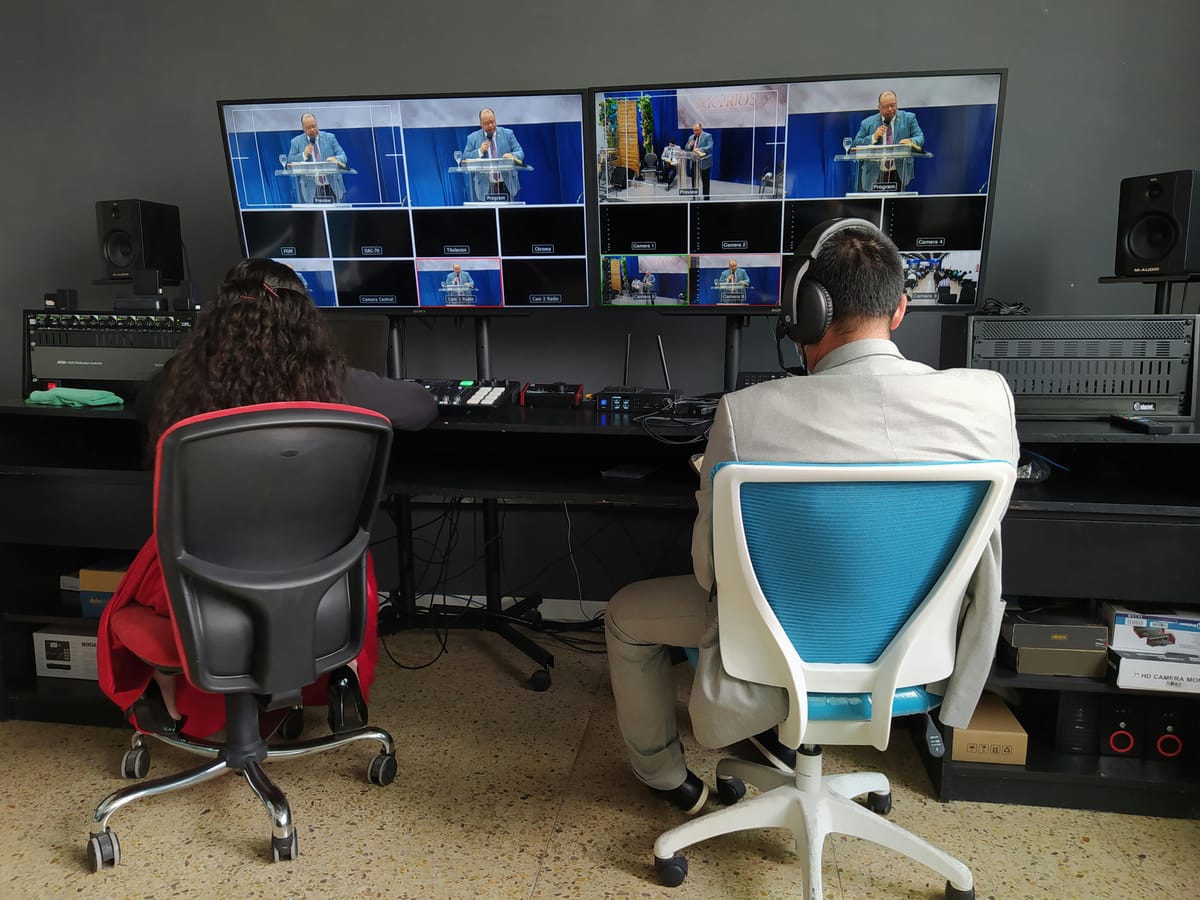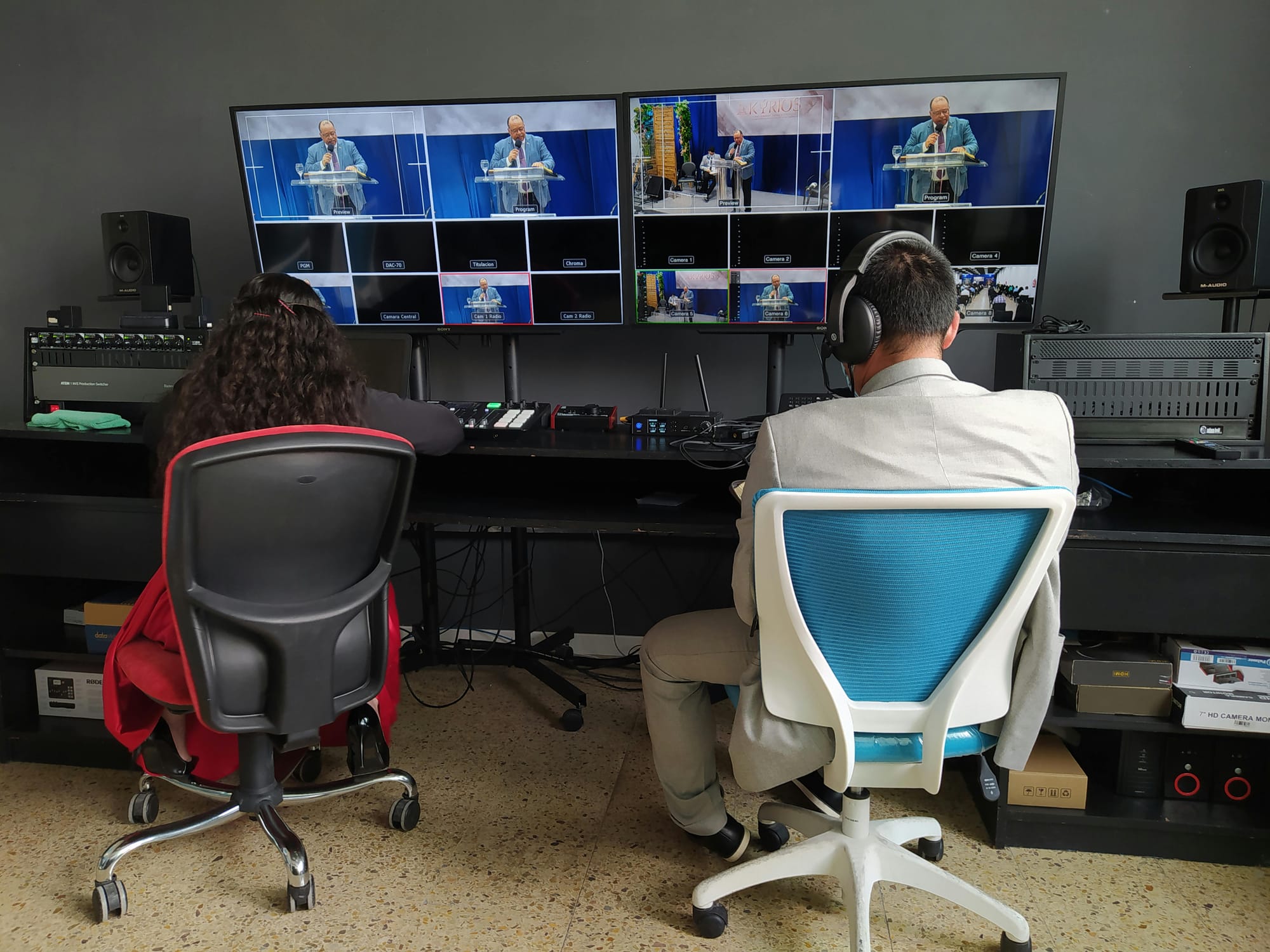Understanding the Technical Side: Key Terms and Concepts to Know When Working with Video Editors
In the dynamic world of video editing, grasping the technical terminology and concepts is crucial for effective communication and collaboration.


Key Takeaways:
- Higher resolution means more detail and clarity in video quality, with common resolutions including SD, HD, Full HD, 4K, and 8K
- Frame rate, measured in frames per second, affects the smoothness of video motion
- Bitrate determines the amount of data processed per second in a video file, impacting quality and file size
- Codecs like H.264, HEVC, and ProRes compress and decompress video files for storage and playback
- Color correction adjusts colors for consistency, while color grading stylizes the footage for specific visual effects
- The timeline is the visual representation of the video project where clips are arranged and manipulated
- Keyframes create animations and transitions by changing specific parameters at set points in the timeline
- Tools like Adobe Premiere Pro, Final Cut Pro, and DaVinci Resolve streamline editing workflows and enhance productivity
In the dynamic world of video editing, grasping the technical terminology and concepts is crucial for effective communication and collaboration. A lesser-known fact is that video editing dates back to the early 20th century when filmmakers used physical film reels, manually cutting and splicing footage together. This hands-on approach laid the foundation for modern digital editing, which offers unprecedented precision and creativity.
1. Resolution
Resolution refers to the number of pixels that make up an image on the screen. It's typically denoted by width x height (e.g., 1920x1080 for Full HD). Higher resolution means more detail and clarity. Common resolutions include:
- SD (Standard Definition): 720x480 pixels
- HD (High Definition): 1280x720 pixels
- Full HD: 1920x1080 pixels
- 4K (Ultra HD): 3840x2160 pixels
- 8K: 7680x4320 pixels
2. Frame Rate
Frame rate is the number of frames displayed per second (fps) in a video. Common frame rates include:
- 24 fps: Standard for films, offering a cinematic look
- 30 fps: Common for TV shows and online content
- 60 fps: Used for sports and action scenes for smooth motion
3. Bitrate
Bitrate measures the amount of data processed per second in a video file, typically expressed in megabits per second (Mbps). Higher bitrates generally result in better quality but larger file sizes. For instance:
- Low bitrate: Suitable for web streaming
- High bitrate: Ideal for high-definition broadcasting and archival purposes
4. Codec
A codec (compressor-decompressor) is a tool used to encode or decode a digital data stream or signal. It compresses the video file for storage and decompresses it for playback. Common codecs include:
- H.264: Widely used for its balance of quality and file size
- HEVC (H.265): Offers better compression efficiency than H.264
- ProRes: Popular in professional editing for high quality
5. Color Grading vs. Color Correction
Understanding the difference between color grading and color correction is crucial:
- Color Correction: Adjusting colors to achieve a natural and consistent look across all footage
- Color Grading: Stylizing the color of the footage to create a specific mood or visual style
6. Timeline
The timeline is the visual representation of the video project in the editing software. It allows editors to arrange and manipulate video clips, audio tracks, and effects in a sequence. Key components include:
- Tracks: Layers of video and audio
- Markers: Points to denote important moments or edits
- Clips: Segments of video or audio placed on the timeline
7. Keyframes
Keyframes are points in the timeline where specific parameters (e.g., position, opacity, scale) change. They are essential for creating animations and transitions. For example:
- Position keyframes: Move an object from one place to another
- Opacity keyframes: Fade an object in or out
8. Transitions
Transitions are effects used to smoothly move from one clip to another. Common types include:
- Cuts: Instant transition from one clip to another
- Dissolves: Gradual fade from one clip to another
- Wipes: One clip is replaced by another in a wiping motion
9. Aspect Ratio
Aspect ratio is the width-to-height ratio of the video frame. Common aspect ratios include:
- 4:3: Traditional TV and computer monitors
- 16:9: Standard for HD and 4K video
- 21:9: Used for cinematic and ultra-widescreen displays
10. Audio Sync
Audio sync involves aligning the audio tracks with the corresponding video footage. Proper sync ensures that dialogue and sound effects match the visuals, preventing distracting delays or mismatches.
11. Rendering
Rendering is the process of exporting the edited video into a final output format. This process involves compressing and encoding the video, applying all the edits, effects, and adjustments made in the timeline.
12. Proxy Files
Proxy files are lower-resolution versions of high-resolution video files. They are used to make editing smoother and faster on less powerful computers. Once editing is complete, the proxy files are replaced with the original high-resolution files for final rendering.
13. LUTs (Look-Up Tables)
LUTs are predefined color grading presets that transform the colors of the footage to achieve a specific look or style. They are widely used to maintain consistency and achieve a desired visual aesthetic quickly.
14. Chroma Keying
Chroma keying is a technique used to remove a specific color from the video, typically green or blue, and replace it with another image or video. This is commonly used for special effects and backgrounds.
15. Compression
Compression reduces the file size of a video by removing redundant data. There are two main types:
- Lossy Compression: Reduces file size by discarding some data, resulting in a loss of quality (e.g., H.264)
- Lossless Compression: Reduces file size without any loss of quality (e.g., ProRes)
16. Video Formats
There are various video file formats, each with its own advantages:
- MP4: Widely supported, good balance of quality and file size
- MOV: Developed by Apple, commonly used for professional editing
- AVI: Older format, large file sizes but high quality
17. Audio Levels
Audio levels refer to the volume of the audio tracks. Properly balanced audio ensures that dialogue, music, and sound effects are clear and not distorted. Levels are measured in decibels (dB).
18. Storyboarding
Storyboarding involves creating a visual plan of the video project. It consists of sketches or images representing each shot, helping to organize and visualize the narrative before editing begins.
19. Multicam Editing
Multicam editing allows the simultaneous editing of footage from multiple cameras. This is especially useful for live events, interviews, and scenes with multiple angles, ensuring seamless transitions between different perspectives.
20. B-Roll
B-roll refers to supplemental footage that adds context and visual interest to the main footage (A-roll). It includes cutaway shots, establishing shots, and other visual elements that enhance the storytelling.
Tools to Enhance Video Editing Workflows
Using the right tools can significantly improve efficiency and creativity in video editing. Here are three software tools that are essential for achieving professional results:
1. Adobe Premiere Pro
Adobe Premiere Pro is a leading video editing software that offers a range of features to streamline editing workflows:
- Utilize the multi-cam editing feature to simplify complex projects with multiple camera angles
- Use the Essential Graphics panel to create and customize motion graphics templates, saving time on repetitive tasks
- Leverage Adobe's Creative Cloud integration for seamless collaboration and asset sharing
2. Final Cut Pro
Final Cut Pro is a popular video editing tool known for its user-friendly interface and powerful features:
- Take advantage of the magnetic timeline to easily arrange clips and avoid timeline gaps
- Use compound clips to group related clips and apply global changes, enhancing efficiency
- Employ the built-in color grading tools to achieve professional-grade color correction without needing additional software
3. DaVinci Resolve
DaVinci Resolve is renowned for its advanced color grading capabilities and comprehensive editing tools:
- Use the collaborative workflow features to enable multiple editors to work on the same project simultaneously
- Leverage the Fairlight audio panel for advanced audio editing and mixing within the same software
- Utilize the Fusion visual effects panel to create complex visual effects and motion graphics
FAQ
1. What is the difference between color correction and color grading?
Color correction involves adjusting colors to achieve a natural and consistent look across all footage, while color grading is about stylizing the color of the footage to create a specific mood or visual style.
2. How does resolution affect video quality?
Higher resolution means more detail and clarity in the video. Common resolutions range from SD (720x480) to 8K (7680x4320), with higher resolutions providing better quality.
3. What is the purpose of using proxy files in video editing?
Proxy files are lower-resolution versions of high-resolution video files used to make editing smoother and faster on less powerful computers. They are replaced with the original high-resolution files for final rendering.
4. How do LUTs enhance the video editing process?
LUTs (Look-Up Tables) are predefined color grading presets that quickly transform the colors of the footage to achieve a specific look or style, maintaining consistency and saving time.
5. Why is audio sync important in video editing?
Proper audio sync ensures that dialogue and sound effects match the visuals, preventing distracting delays or mismatches and enhancing the overall viewing experience